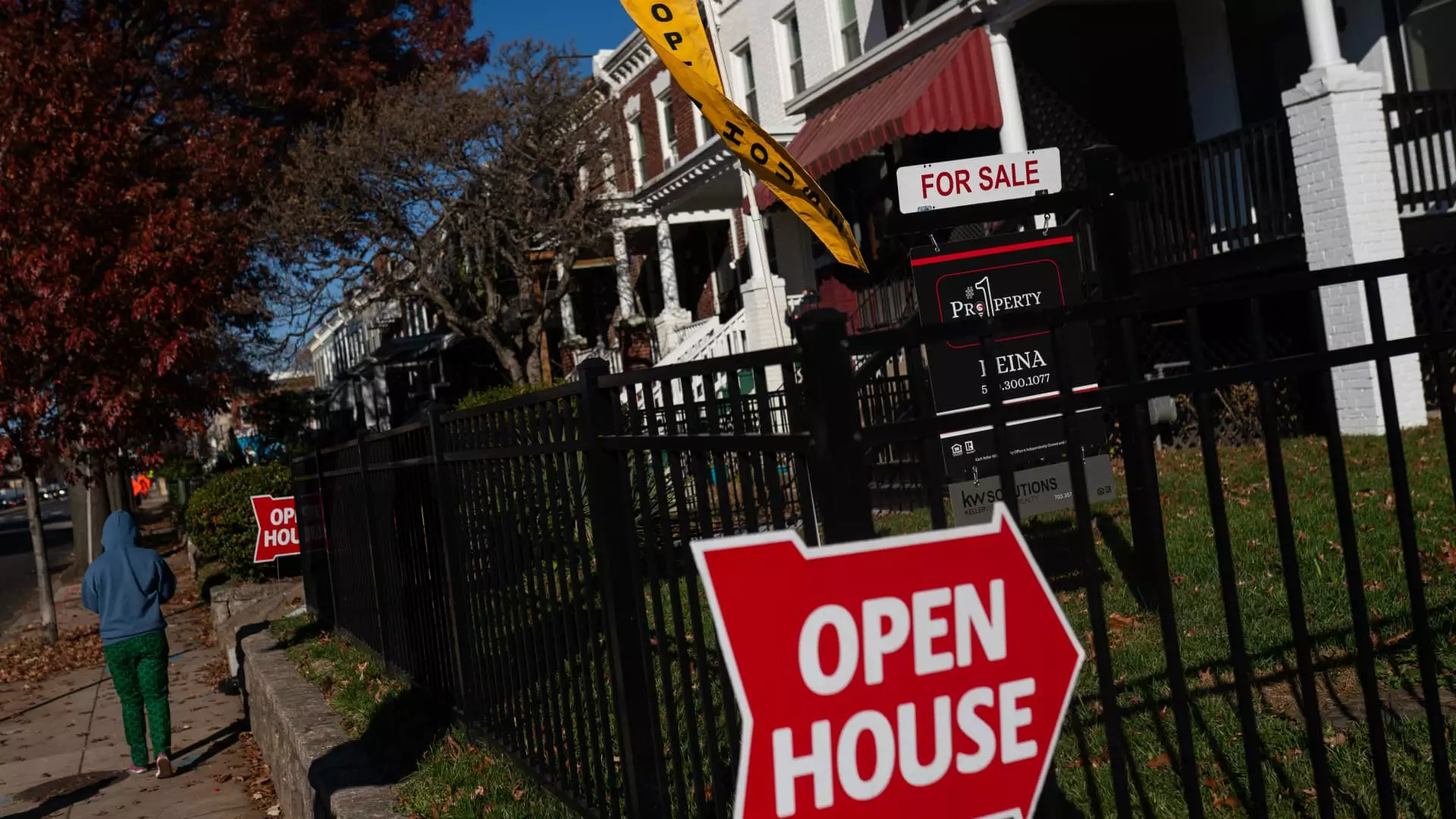Maryland Governor Wes Moore’s experience offers a personal lens through which to view the broader housing crisis. At the tender age of 8, his mother contemplated sending him to military school to correct his behavior, ultimately following through when he turned 13. Moore spoke candidly about his tumultuous beginning and how it led him to a life-changing experience at a military school in Pennsylvania. While his journey is notably unique, it underscores a harsh truth: the sacrifices made by families in the pursuit of a better future. His grandparents, who borrowed against their home to ensure he could attend the school, epitomize the struggle faced by countless families clinging to the elusive American Dream. This dynamic of housing as more than just shelter—a cornerstone of security, opportunity, and intergenerational wealth—presents a troubling counterpoint to America’s current housing realities.
The Unseen Chains of Housing Costs
Moore’s narrative reveals an unsettling paradox prevalent in many American households today: the stark contrast between the aspirational nature of homeownership and the oppressive reality faced by aspiring buyers. A staggering 30% of young Maryland residents are contemplating leaving the state due to exorbitant housing costs. According to a 2024 report from the Joint Center for Housing Studies of Harvard University, the percentage of cost-burdened renters hit an all-time high in 2022, emphasizing that the current housing landscape is not just challenging but possibly catastrophic for the younger generation.
The numbers tell an overwhelming story, one that paints a picture of despair for many. Homeownership, once an achievable milestone, has morphed into a far-off dream. It’s critical to recognize that while property values and interest rates soar, wages stagnate. This mismatch drives a wedge not only between generations but also between socioeconomic classes, perpetuating a cycle of inequality that seems impossible to break.
A Generation Grounded: The Rise of Renters
A revealing analysis from the Urban Institute illustrates a striking trend: 35- to 44-year-olds today are significantly less likely to be homeowners compared to their counterparts 45 years ago. In a span of just over four decades, homeownership within this demographic has fallen by more than 10%. This stark decline isn’t merely a statistic; it’s a harbinger of long-term financial instability for individuals who are unable to build equity. The current generation, unlike their predecessors, is forming households at a slower pace, which only compounds the risks of financial fragility.
Education serves as another pivotal factor contributing to this growing divide. Individuals from lower-income brackets are not only less likely to be married—a factor that often correlates with higher rates of homeownership—but they are also facing tougher barriers to educational attainment. When the future stability of families relies on owning a home, but pathways to ownership are constricted, the cycle of disenfranchisement only deepens.
Racial Disparities in Homeownership: A Sobering Reality
The housing crisis is further complicated by racial inequalities that have remained stubbornly persistent. Data from the National Association of Realtors demonstrate that in 2023, Black homeownership stood at 44.7%, a figure that, while showing a modest increase, still highlights a worrying disparity compared to the white homeownership rate at 72.4%. These figures reflect more than just numbers; they represent the enduring consequences of systemic inequalities which continue to deny a significant segment of the American populace the chance to build wealth through homeownership.
The challenges faced by aspiring Black homeowners are multifaceted and cannot be disentangled from historical economic disadvantages. Despite signs of progress, there remains a long road ahead, and the sustainability of these gains remains in question. For other racial groups—Asians at 63.4% and Hispanics at 51%—the picture is hardly rosy, underscoring that the housing affordability crisis affects diverse communities in varying degrees.
Policy Solutions: A Call for Action
The looming question is: what can be done to reverse this trend and restore the foundations of homeownership for future generations? As the landscape grows more complex, potential solutions emerge. Educational reforms aimed at low-income households, down payment assistance programs, and regulatory changes that encourage housing production can act as vital tools in bridging the gap between aspiration and reality. Such measures are not merely good policy; they are moral imperatives that underscore a collective responsibility to enable all Americans to achieve the dream of homeownership.
The American Dream isn’t merely a nostalgic phrase; it embodies the ideal of opportunity, equality, and prosperity for all. However, without systematic reforms to address the persistent inequalities in housing, the dream risks fading into an elusive mirage—one that countless individuals have come to view with skepticism rather than hope. In the face of a housing affordability crisis, Americans must demand actionable solutions to restore the belief that homeownership is not just a privilege but a fundamental right.

